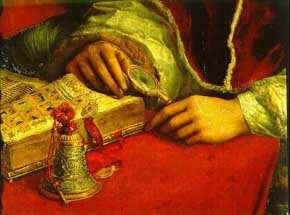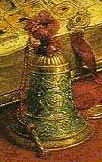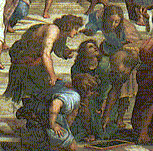| The course will be
focused on the political and cultural meaning of paintings,
sculptures and buildings created mainly in Rome between the 16th
and the 17th century
with the support of papal patronage. Not only the latter will be
considered as a major impulse to the production of works of art
during the Renaissance and the Baroque, but it will be also
investigated within the social and historical context of the
periods examined (Reformation and Counter-Reformation). The issue
of papal patronage will be thus discussed from the perspective of
internal and external political expansion, with its nepotistic and
private involvements and finally in its complex religious and
theological objectives. Equal importance will be given to the
stylistic and iconographic consequences produced by papal
patronage on the development of 16th and 17th
century Italian art history, by taking into consideration the
works of some absolute masters such as Michelangelo, Raffaello,
Caravaggio and Bernini. The course will unfold on the basis of
issues and problems which may induce students to a fruitful
discussion in class.
Method of presentation: lectures,
seminar discussions, visits to monuments and sights, slides, use
of multimedia and internet resources (selected by the instructor),
virtual classroom.
Course
objectives:
By
the end of the course students will have:
-
an outline of XVIth
and XVIIth century European history and geography, with particular
attention to the role played by Papacy;
-
a knowledge of the cultural and political aspects of the
most important pontificates of the time considered;
-
a familiarity with the work of the principal artists
working in Rome during the Renaissance and Baroque;
-
an awareness of the importance of public and private
patronage as a major issue to understand the meaning and purpose
of art production;
-
a knowledge of the most important artistic enterprises and
urbanistic changes commissioned in Rome by Popes during the
Renaissance and Baroque as a part of their political strategy;
-
an awareness of the involvements played by Reformation and
Counter-Reformation in the development of XVIth and XVIIth century
artistic language.
Course format: since the work of art will be the central focus of the course, classes
will be held – partly – in situ (see the list of visits below).
|








